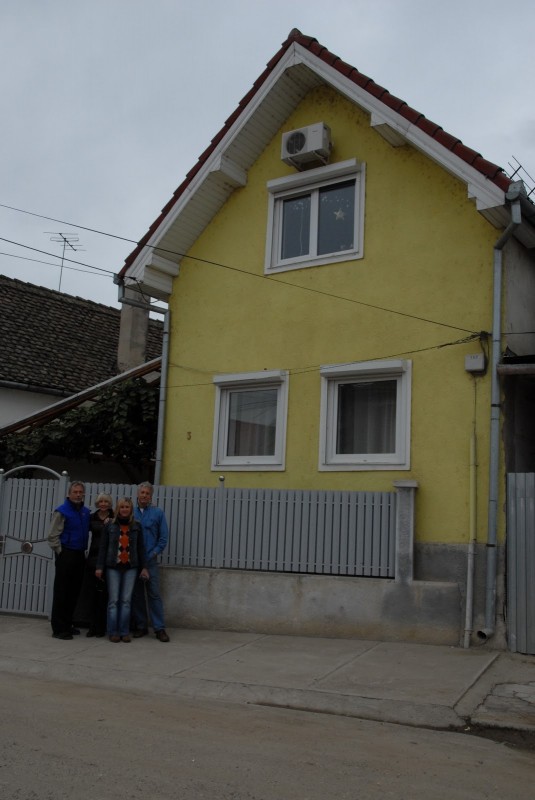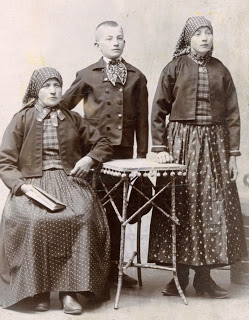TRAVEL TUESDAY
After my brothers and I read the summarized history of the Gärtz (originally Gerz or Görz) family handed to us by the church secretary, Renate, when we visited my grandfather’s church in his hometown of Neppendorf, Romania, we discovered the following highlights. Perhaps some may ring true for your family as well.
And Michael begat Michael, begat Michael, begat… (you get the idea!)
One generation after another named the first-born son in the family Michael. I’ll distinguish them with a birth year before the name. First-born girls were typically named after their mothers.
Pre-marriage messing around
The first (1771) Michael Gerz and his wife, Elisabeth, had seven children, including a Katarina born in 1807. This Katarina had an illegitimate child. According to the research, Katarina’s church pastor “disciplined” her, whatever that meant. Makes me think of The Scarlet Letter. I wonder if the father of this “unehelicher Knabe” (boy out of wedlock) was “disciplined?” Hmmm. What do you think?
Poverty and old age wipe the slate clean
In 1852, at age eighty-one, 1771-Michael Gerz and his wife were forgiven a “loan” because of “old age and poverty.” Do we do that today? It makes me sad to think that he immigrated to Neppendorf to have a better life, yet clearly didn’t make it.
Death by freezing
The 1802-Michael, yet another carpenter and son of the poverty-stricken couple above, froze to death when he was 58 years old. No details, but at least he didn’t die before he could name his first-born son…you guessed it…Michael–whom we’ll call 1829-Michael—very important because he’s the direct link to my grandfather, Josef, and present-day cousins.
The Home to last 150 years
1829-Michael was a linen weaver, who married Maria Hutter (pronounced “Hooter.” Now don’t laugh!). According to my cousin, Maria, this 1829-Michael is credited with building the Gärtz home in Neppendorf (right), in which generations of Gärtzes lived, including my grandfather, until he emigrated, and Maria’s family through the 1980s. We all made a pilgrimage there after our visit to the church and took this picture. We’d come 5,000 miles and now stood where perhaps Josef had stood, bidding farewell to his mother and sister in 1910, never to see them again.
One of the four living children of 1829 Michael and Maria was yet another Michael—born in 1867. (Keeping track of ancestors sure gets complicated when everyone has the same names!) We have no photo of 1829-Michael, but we do have this photo of his son, 1867-Michael. Cousin Maria gave it to me because he’s her great-grandfather. 1829 Michael is therefore Maria’s great-great grandfather. But he’s only my great grandfather, even though Maria and I are about the same age. Here’s why and how the family generations got skewed.

1867 Michael Gärtz, half brother to my grandfather, Josef (with his mother and sister in next photo. They shared the same father, 1829 Michael, who was sixty years old when Josef was born.
1829-Michael’s first wife, Maria Hutter, died in 1883 (age 55). Wasting no time, widower Michael remarried a year later to Katarina Schnell, my grandfather’s mother. She was only thirty-three when she married fifty-five-year old 1829 Michael. I wonder if marrying someone who could be your daughter’s age was a sort of “trophy wife” of the day.
Widowhood for Josef’s mom
When Josef was a mere four years old, his father died. That’s why this family photo of Josef’s mom, him, and his sister, Katarina, has no dad posing with them. Cousin Maria tells me that half-brother, 1867-Michael, moved into the Gärtz home with his wife Sara, and helped raise little Josef. It couldn’t have been easy with two women in one household.
I’d find out more about them in the most unexpected way. But first, some truly astounding discoveries in a small museum in the back of the Gärtz church, celebrating German life Neppendorf.



I love that picture. I think I shared with you that my daughter’s husband is Hungarian, but born and raised in Venezuela. When he wanted to marry my daughter, his mother made him tell her that it was a family expectation that their first-born son would be named Imre. For over two hundred years, the first-born son of the first-born son was named Imre. My grandson’s name is Imre Ian. He is known by his middle name. Ian’s father is known by his middle name, Roland. As a lover of family history, how could I complain?
Great story, great photos.
Gotta find out what you discovered!
Thanks to all for your comments. It does seem that passing on first names has been a family tradition in lots of cultures. The surprises to come were fun to find.
What a beautiful church! The light is amazing, too. Also, on the subject of the nickname “sepp”, is this taken from the second half of the name Joseph (perhaps pronounced “Josepp”?